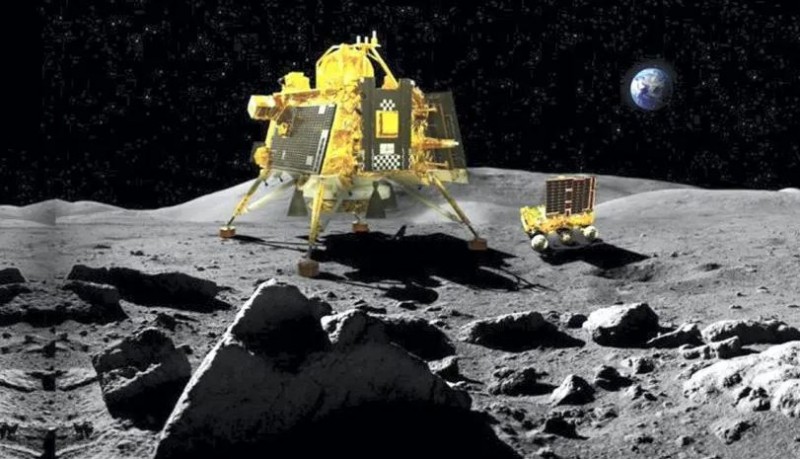
Indian Space Research Organization (ISRO)'s ambitious lunar mission, Chandrayaan-3, achieved a successful soft landing on the Moon's South Pole at 6:40 pm on August 23. The Pragyan Rover, housed within the Vikram Lander, successfully disembarked and explored the lunar surface. Over the next 14 days, equivalent to one lunar day, the Pragyan Rover will conduct a series of experiments on the Moon's surface.
The data collected by the rover Pragyan will be transmitted to the Vikram Lander, which will then relay the information to ISRO's Command and Control Center in Bengaluru, Earth. Concerns have arisen about what happens after these 14 days. Chandrayaan-3 won't return to Earth. Instead, after the lunar night of 14 days, Vikram and Pragyan will become inactive due to the extremely cold conditions of the Moon's South Pole, reaching about -334°C. However, there is a possibility that they could reactivate when the lunar sunrise occurs again. This would be a significant boon for India's lunar mission.
It's important to note that Vikram and Pragyan will remain on the Moon and won't make a return journey to Earth. ISRO has already released an image of Chandrayaan-3's landing site, captured by Vikram's camera shortly after the precise soft landing at 6:04 pm on Wednesday. The landing site is a relatively flat area on the Moon's South Pole.
Chandrayaan-3 has a total weight of 3,900 kg. The propulsion module weighs 2,148 kg, and the lander module, Vikram, weighs 1,752 kg, which includes the 26 kg rover Pragyan. Pragyan's mission includes analyzing the chemical composition of the lunar surface, investigating moon soil and rocks, and measuring the density and thermal properties of ions and electrons near the polar region. This achievement marks a significant milestone, as no other country has ventured to the Moon's South Pole. Russia's Luna-25 mission aimed for a similar landing, but it crashed on August 21. India's ISRO has now succeeded in softly landing Chandrayaan-3 on the Moon's South Pole in its second attempt, following the crash landing of the Chandrayaan-2 mission in 2019.
SC Proceedings on Article 370: CJ Chandrachud's Statement on Article 35A and More
Indians Are Redefining Kindness in Dating and Relationships, According to a Study
Reliance AGM 2023: Jio Surpasses 450-Mn Subscribers; Monthly Data Usage at 25 GB